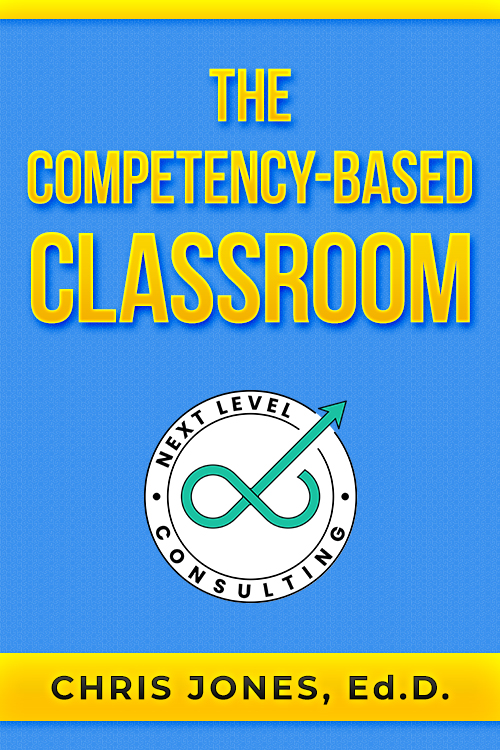As educators, we are constantly seeking ways to enhance student learning and create an environment that promotes growth and success. One approach that has gained traction in recent years is the competency-based classroom. Explore key strategies and practices shared by Dr. Chris Jones in his course, The Competency-based Classroom, to help you create a more engaging learning environment.
1. Shifting from Activity-Based to Competency-Based Learning
In traditional classrooms, learning often revolves around completing activities that may not necessarily lead to mastering the content. Competency-based learning, on the other hand, focuses on the development of specific skills and knowledge that students need to demonstrate mastery.
To create a competency-based classroom, we must shift our focus from the activities we assign to the outcomes we want our students to achieve. This requires a clear understanding of the standards, objectives, and learning goals that drive the curriculum. By emphasizing the importance of mastering these competencies, we can ensure that students are engaged in meaningful learning experiences that contribute to their overall growth and development.
2. Developing a Grading System Based on Competency
A crucial aspect of a competency-based classroom is developing a grading system that reflects student mastery of the competencies rather than their compliance with deadlines or other unrelated factors. In this system, student performance is assessed on their understanding of the content and demonstration of the skills they have acquired.

For instance, instead of grading homework based on whether it was completed, assess students’ understanding of the content covered in the homework. This allows for a more accurate representation of students’ academic progress and encourages them to focus on mastering the content rather than simply completing tasks. Additionally, this approach promotes a growth mindset among students, as they recognize that their effort and persistence in learning can lead to success.
3. Separating Behaviors from Competencies
In a competency-based classroom, it’s important to separate behaviors (such as punctuality, collaboration, and academic honesty) from competencies. This distinction ensures that students’ understanding of the content is not blurred by factors unrelated to their mastery of the subject matter.
By separating behaviors from competencies, we can more accurately assess and report students’ academic progress while also addressing any behavioral issues that may arise. This approach allows teachers to provide targeted feedback and support for students in both academic and behavioral areas, promoting well-rounded growth and development.
4. Rethinking Traditional Practices
A competency-based classroom requires us to rethink some traditional educational practices. Here are six hot-button topics and how they can be approached in a competency-based classroom:
- Homework: Focus on practice and understanding rather than compliance. Use homework assignments as opportunities for students to develop their understanding of the competencies being taught, rather than simply requiring them to complete tasks for the sake of compliance.
- Extra Credit: There is no extra credit; instead, provide opportunities for additional evidence of learning. Encourage students to continue learning and demonstrating mastery of competencies by offering them chances to submit additional evidence of their understanding.
- Late Work: Treat punctuality as a behavior separate from competency. While punctuality is important, it should not overshadow a student’s demonstration of competency in a subject area. Address late work as a behavioral issue, not an academic one.
- Makeup Work: Focus on evidence of learning and demonstration of mastery, rather than simply completing missed assignments. Provide opportunities for students to catch up and demonstrate their understanding of the missed content without penalizing them academically for their absence.
- Zeros: Use a zero to indicate a lack of evidence or understanding, keeping in mind that it is less detrimental on a smaller scale (e.g., 0-4) than on a 100-point scale. This approach allows for a more accurate representation of a student’s understanding without causing unnecessary harm to their overall grade.
- Reassessment: Emphasize the importance of learning and demonstrating mastery, regardless of when it occurs. Allow for reassessment opportunities that focus on specific standards or objectives, rather than requiring students to retake an entire test or unit. This targeted approach enables students to concentrate on areas where they need improvement and promotes a growth mindset.
By reevaluating these traditional practices, we can create a more supportive and effective learning environment that prioritizes student mastery of competencies.
Embracing Competency-Based Education
Creating a competency-based classroom requires a shift in mindset, as well as the implementation of effective strategies and practices. By focusing on competencies and outcomes, developing a grading system that reflects student mastery, separating behaviors from competencies, and rethinking traditional practices, we can create an engaging and successful learning environment that truly supports student growth and development.
For a more comprehensive understanding of this approach, check out Dr. Jones’ course, The Competency-based Classroom. By applying the insights and strategies shared in this session, you can transform your classroom into a thriving, competency-based learning environment that empowers your students to reach their full potential.







